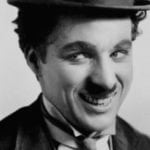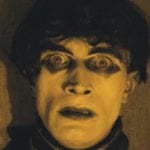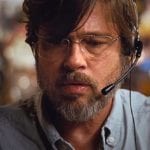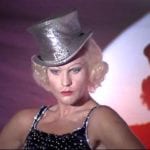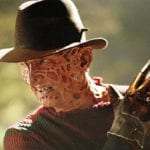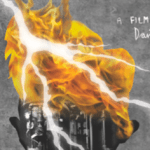 Our World
Our World  Our World
Our World  Weird Stuff
Weird Stuff 10 Fascinating Facts You Might Not Know About Snow
 Miscellaneous
Miscellaneous Top 10 Things Crypto Was Supposed to Change & What Actually Did
 History
History 10 Huge Historical Events That Happened on Christmas Eve
 Music
Music 10 Surprising Origin Stories of Your Favorite Holiday Songs
 History
History 10 Less Than Jolly Events That Occurred on December 25
 Weird Stuff
Weird Stuff 10 Funny Ways That Researchers Overthink Christmas
 Politics
Politics 10 Political Scandals That Sent Crowds Into the Streets
 Weird Stuff
Weird Stuff Ten Bizarre Facts About The Doge Meme
 Our World
Our World 10 Ways Your Christmas Tree Is More Lit Than You Think
 Our World
Our World 10 Archaeological Discoveries of 2025 That Refined History
 Weird Stuff
Weird Stuff 10 Fascinating Facts You Might Not Know About Snow
 Miscellaneous
Miscellaneous Top 10 Things Crypto Was Supposed to Change & What Actually Did
Who's Behind Listverse?

Jamie Frater
Head Editor
Jamie founded Listverse due to an insatiable desire to share fascinating, obscure, and bizarre facts. He has been a guest speaker on numerous national radio and television stations and is a five time published author.
More About Us History
History 10 Huge Historical Events That Happened on Christmas Eve
 Music
Music 10 Surprising Origin Stories of Your Favorite Holiday Songs
 History
History 10 Less Than Jolly Events That Occurred on December 25
 Weird Stuff
Weird Stuff 10 Funny Ways That Researchers Overthink Christmas
 Politics
Politics 10 Political Scandals That Sent Crowds Into the Streets
 Weird Stuff
Weird Stuff Ten Bizarre Facts About The Doge Meme
 Our World
Our World 10 Ways Your Christmas Tree Is More Lit Than You Think
Top 15 Greatest Silent Films
[Competition Included – see first comment] I’m surprised there isn’t already a list like this! For nearly the first forty years of cinema, most movies were released completely silent. During this period, many techniques had to be invented completely from scratch, and the language of film-making was born. Here are some of the best and most influential silent films ever made.
An adaptation of Gaston Leroux’s famous novel. The film itself is most well-known for star Lon Chaney’s self-applied make-up. Chaney painted his eye sockets black, giving a skull-like impression to them. He also pulled the tip of his nose up and pinned that in place with wire, enlarging his nostrils with black paint, and putting a set of jagged false teeth into his mouth to complete the ghastly deformed look of the Phantom. The make-up was painful, but effectively horrific. From this Lon Chaney gained the reputation of being the “Man of 1,000 Faces.” His son, Lon Chaney, Jr., later became a horror legend in his own right by starring in “The Wolf Man” (1947).
A surrealist short film from the twisted minds of director Luis Buñuel and famous painter Salvador Dali. “Andalou” is a movie that must be seen to be fully understood: it is a short montage of dream-like images that include a famous scene of an eyeball being cut open, among other grisly images. It is the most famous of Buñuel’s films and helped put surreal and experimental film-making on the map.
An early comedy from the legendary Buster Keaton. It features Keaton as a movie projectionist and janitor who is studying to become a detective. It is among Keaton’s funniest films and helped to establish his unique style.
The most expensive picture of its time, “Greed” started out as a nearly 9 hour film before being cut down drastically. It exists today at just under 4 hours in length. The remaining footage is considered to be the most tragic loss in all of cinema. The plot follows a dentist whose wife wins a lottery ticket, only to become obsessed with money.
The movie that invented movies as we know them. Things like close-ups, camera pans, and eyeline matches were unheard of until D.W. Griffith’s 3 hour Civil War epic. It was incredibly successful upon release, which can be attributed to its well-known controversy regarding its racist depictions of slaves after the war. It is also credited as having inspired the reformation of the Ku Klux Klan in 1914. Overall, a fascinating and well-made film that has a very unfortunate background. Still a must-see for anybody interested in film.
An early German silent film, “Dr. Caligari” defined what would become the German Expressionism period. Full of twisted, asymmetrical sets and images, Dr. Caligari is an early horror film about a mad doctor and his sleepwalking servant that seem to be somehow connected to a string of ghastly murders. It features one of the earliest examples of a twist ending, which was employed for political reasons when it was felt the original ending was far too dark, as it cast authority figures in a negative light.
Like Caligari, Nosferatu was an early German Expressionist film that helped to define the horror genre. Intended as an adaptation of “Dracula,” numerous alterations had to be made as the producers could not properly secure the rights. The film is praised for director F. W. Murnau’s unique use of shadows and silhouettes to enhance the sheer terror of Max Schreck’s portrayal of the vampire.
One of Charlie Chaplin’s best films. Chaplin’s famous Tramp character heads to Alaska to participate in the gold rush, and finds more than he bargained for. This is the film Chaplin has said he would most like to be remembered for. It is also well-known for its poster, which depicts the Tramp cold and alone, sitting on top of a stove in the corner of a room. Hardly a poster for a comedy, “The Gold Rush” is nonetheless heartwarming and hilarious.
Another Buster Keaton comedy. This one stars Keaton as a young railroad engineer that aspires to become a soldier in the Civil War, he is unfortunately turned down. He returns home, downtrodden. A year later, his beloved train (the eponymous “The General”) is hijacked by Union soldiers, and he decides to stop them himself, single handedly. “The General” is best known for its humor and impressive action sequences, which utilize real, running steam trains. The climax of the film includes a spectacular moment where a bridge (sabotaged by Johnnie) collapses as a railroad train crosses it. This scene went on to inspire numerous other films, such as “The Bridge on the River Kwai” and “The Good, The Bad and the Ugly.”
D.W. Griffith’s response to the detractors of the “Birth of a Nation.” He was offended by their attacks on his films and decided to make a movie depicting how intolerance led to tragedy throughout history. Intolerance is a complex film that tells four separate stories about intolerance that are interwoven together. The movie constantly cuts back and forth between the four stories: a modern tale depicting the struggles of workers during the industrial revolution; the story of the Passion of the Christ; the fall of Babylon (which includes one of the biggest sets ever built); and the Bartholomew’s Day Massacre in France. As the movie reaches its climax, the cutting between stories becomes faster and more intense. A marked improvement over his previous film, this is the movie D.W. Griffith should be remembered for.
A Russian film by director Sergei Eisenstein. It presents a dramatized version of the mutiny that occurred in 1905 when the crew of the Russian battleship Potemkin rebelled against their officers of the Tsarist regime. It is without a doubt a Communist propaganda film, and remains the most influential of all such films. Its most well-known sequence, the Odessa Steps sequence has been referenced many times, most famously in Brian De Palma’s “The Untouchables.”
The first modern science-fiction film. It has influenced all subsequent SF movies from Star Wars to Blade Runner. Metropolis was one of the last German Expressionist films, and is to this date the most expensive silent film ever made. Metropolis is set in a futuristic urban dystopia and examines the social crisis between workers and owners in capitalism. The film was heavily edited upon release, and its cut footage was long considered lost. However, on July 1, 2008, a complete cut of the film was discovered in a film museum in Argentina. Some of the missing shots, however, remain beyond restoration.
This was Charlie Chaplin’s last silent film (“Modern Times”‘s status as a silent film is debatable, or else I would have included it on this list) In “City Lights,” the Little Tramp falls in love with a blind flower salesgirl who believes him to be a rich man. Desperate to maintain the illusion, he attempts to obtain enough money to pay for an expensive operation that can restore her eyesight. Its ending is often considered to be the greatest in film history.
Wow. When I first saw this movie, it was completely silent. No soundtrack, no anything. And it was perhaps the most haunting film experience of my life. The film depicts the final hours of French national hero and saint, Joan of Arc. The film was considered lost until a nearly complete print was found hidden in a mental institution. The movie is influential for its use of close-ups and complete lack of make-up (for realism). Renée Jeanne Falconetti’s performance as Joan is also considered one of the best in screen history.
Sunrise was made by F. W. Murnau, the director of Nosferatu. Murnau was invited by William Fox to make an Expressionist film in Hollywood. It tells the tale of a broken marriage; the husband is enamored by a beautiful, young tramp from the city that tries to persuades him to drown his wife. He is unable to go through with it, and he begins to realize how much he loves his wife. So they take a dreamy, mesmerizing romp through the big city and learn what they truly mean to each other. It is a wonderful, life-affirming film that still impresses and enthralls its viewers to this day.
